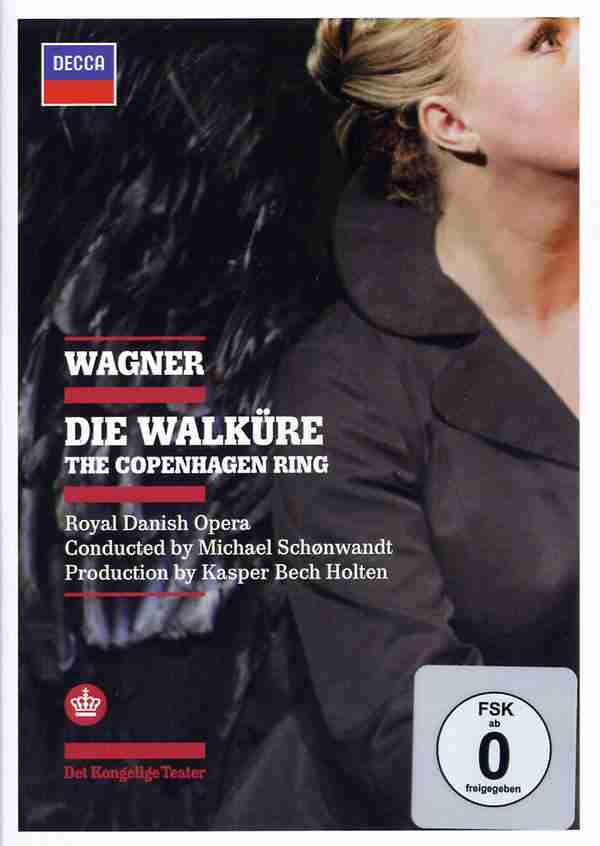A Valkyrie with Broken Wings
This Danish Die Walküre places the struggles of the Gods squarely in a banal world of family drama, like a TV network movie-of-the-week, shot on a low budget. It opens with a striking bourgeois image. Hunding’s “hut” is an art deco apartment. Sieglinde as a cowed, bullied hausfrau desperate to get out. When Siegmund (Stig Andersen) enters, and she immediately seizes upon him as the means of escape. Hunding (Stephen Milling) is a loutish, violent alcoholic. The escape from his apartment is quite literal: Siegmund throws a chair through a plate-glass window and they find the sword stuck in a tree in the front yard.
Mr. Andersen was a late replacement in this cycle, but he gives a committed performance. He sounds comfortable in this low-lying tenor part, and while he reaches for the high notes, the overall effect is pleasing. He is paired with Gitta-Maria Sjöberg, an emotional Sieglinde who is more involved in events than this character usually is. She pulls the sword from the tree, and is awake (and horrified) for the Annunciation of Death. Mr. Milling is a memorable, nasty Hunding, whose voice does not match his hulking Ted Cassidy-like physique.
Wotan (James Johnson) starts on the flying “bridge” that ended Das Rheingold. He is playing a vast game of Stratego with plaster pieces representing the other characters. When he realizes he must slay his son, he smashes his son’s piece at “Das ende!”, eliminating Siegmund from the game of power. Here, the one-eyed God is also blurred by drink: whiskey swigged from a hip flask. Mr. Johnson is both convincing and moving in his anguish.
Decked out in black with literal wings on her back, Iréne Theorin is a dramatically interesting Brunnhilde. She has a heroic soprano voice that is slightly on the small side. But she endures through this difficult role, and her middleweight voice suits the director’s intimate concept. It helps that Michael Schønwalt conducts with a light touch in the pit when it is needed. Her voice hardens under pressure, which makes her big moment with Sieglinde in Act III seem forced.
Kasper Bech Holten’s production has its share of innovative ideas. Wotan is completely combat-unready. All he can do is scheme and bully his daughters. He is totally impotent, and doesn’t even kill Hunding. (The brute laughs, kicks Siegmund’s corpse and strolls off the stage.) The Valkyrie girls, in blood-stained dresses and black feathery angel wings, loot the mummified bodies of dead soldiers on an urban rooftop with a greenhouse-type structure that doubles as Brunnhilde’s Valkyrie rock. At the height of Wotan’s Farewell, the god literally rips the wing from his daughter’s back before putting Brunnhilde to sleep, a moving moment that echoes the mutilation of Alberich in Das Rheingold.
Mr. Schønwandt falls into the Böhm-Boulez school of Wagner interpreters. His quick tempos and clear delineation of the instrumentation suit this production, with its contemporary sets and movie-of-the-week atmosphere. Part of that feel is due to the stage direction, but the fast-moving cameras and close focus make this feel more like a soap than an opera.
Paul J. Pelkonen | April 25, 2011





